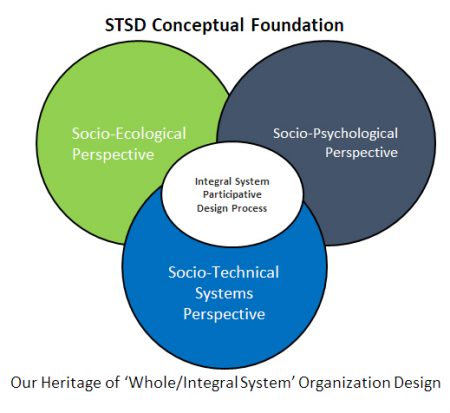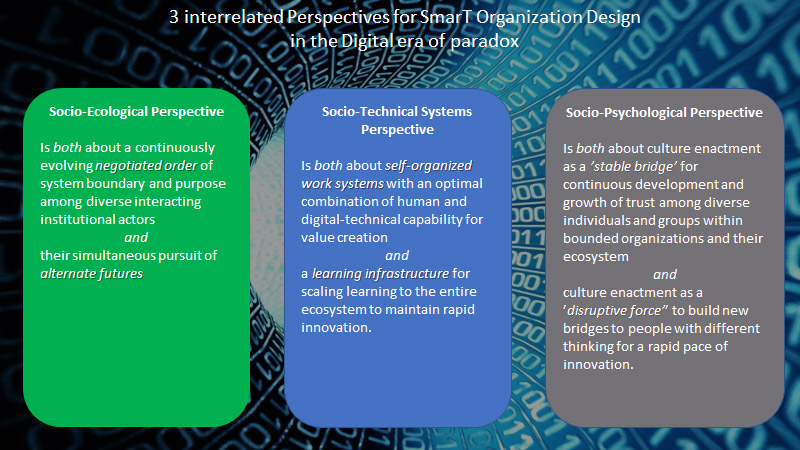During 2019, in a series of dialogues, a webinar, and our annual meeting at USC in Los Angeles, the STSRT community collaborated to reinvent the Smart Organization Design Framework (SODF) and bring it into the digital era.
View and listen to the May 29, 2019 Webinar deliberations: SmarT Organization Design Framework Reinvention Crowdsourcing Webinar, HERE
Our approach to Smart Organization Design is based upon a Socio-technical Systems (STS) conceptual foundation of three interdependent perspectives, each with its own focus or lens, integrated through a whole system participative design process.

This conceptual foundation of three perspectives is fundamental theory for a new way of organizing, that makes a design choice for humanity in a world that has become hyper-turbulent and interconnected through disruptive digital transformation in all sectors of work and life.
Read about the context and purpose for renewal of our approach in this Preamble:
What follows is a brief description of the essence and source of each perspective, based on their original form as developed during the ‘pioneering’, ‘classical’ and ‘modern’ phases of STS Design development.
Read about the heritage of Whole/Integral System Organization Design:
OUR EVOLVING HERITAGE OF STSD V2
Smart Organization Design, (STS Design in the 21st century) puts us on a new path for addressing “humanity’s techno-social dilemma”, described by Frischmann & Selinger in Re-engineering Humanity as an imbalance with the ‘techno’ being the dominant driver and the ‘social’ subservient to it.

Read about how SmarT Organization Design addresses the techno-social dilemma:
As long-time members of the STS Roundtable, Carolyn Ordowich and Bert Painter facilitated the reinvention process and authored the papers associated with it. However, this work is the product of the ‘collective intelligence’ of colleagues within and outside of the STS Roundtable and in our Global Network for SmarT Organization Design, (21st century STS Design community), who have offered insightful comments and substantial improvements for what is still a ‘work-in-progress’.
Thank you to all who have helped enable our work and approach to match the speed and dimension of our complex digitized, VUCA world.

